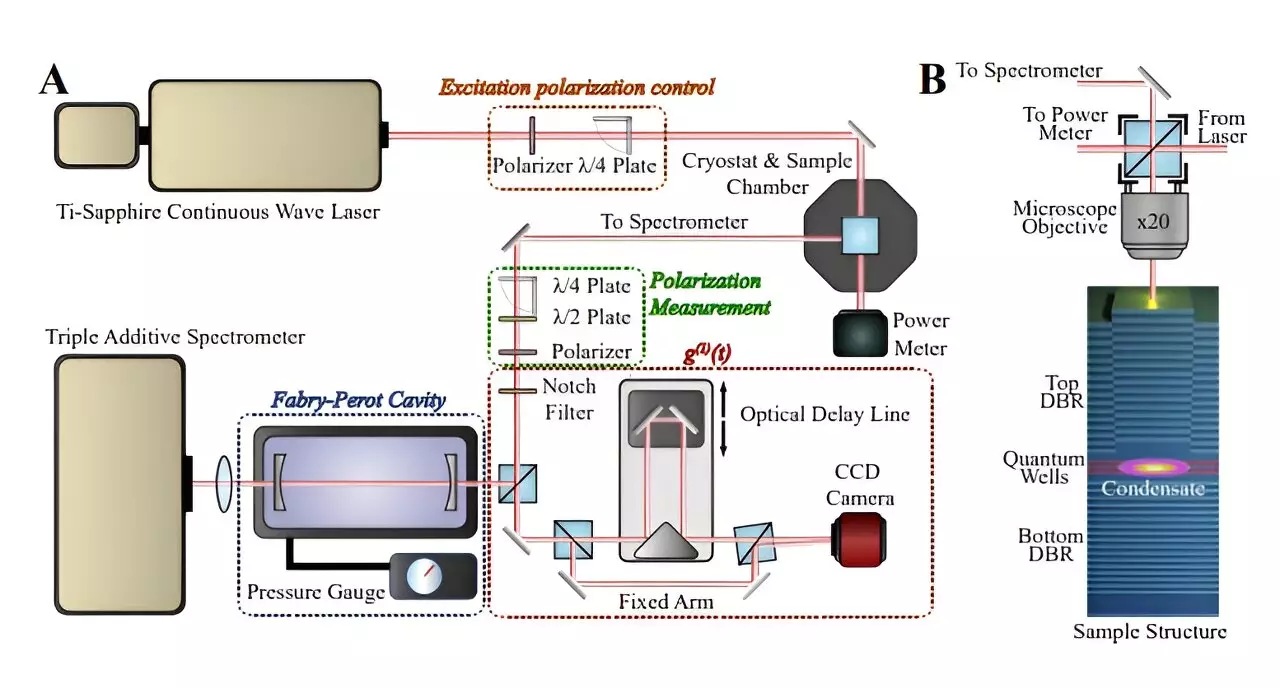The recent discovery of a time crystal on a microscale semiconductor chip has opened up a new realm of possibilities in the field of quantum physics. Researchers have observed the chip oscillating at a rate of several billion times per second, revealing exceptionally high non-linear dynamics in the GHz range. This groundbreaking experiment, published in Science, has established a strong connection between previously uncorrelated areas of non-linear exciton-polariton dynamics and coherent optomechanics at GHz frequencies. The collaboration between the Paul-Drude-Institute for Solid State Electronics (PDI) in Berlin, Germany, and the Centro Atómico Bariloche and Instituto Balseiro (CAB-IB) in Argentina has paved the way for a deeper understanding of quantum phenomena.
The research team utilized a high-quality semiconductor-based sample, designed and fabricated at PDI, to trap coherent light-matter condensates. This sample was created by stacking one-atom-thick layers of semiconductor materials under ultrahigh vacuum conditions, resulting in a micron-sized “box” capable of trapping millions of quantum particles. Once the sample was transferred to CAB-IB for testing, the researchers directed a time-independent laser at it and witnessed the particles inside beginning to oscillate at GHz frequencies – a feat never observed before in a condensate sample on a semiconductor device.
One of the most intriguing findings of the experiment was the ability to fine-tune the oscillations of the particles by adjusting the laser’s optical power. The researchers discovered that the oscillations could be stabilized by introducing 20-GHz mechanical vibrations of the semiconductor atomic lattice. Moreover, they observed that upon increasing the laser power, the particles vibrated at exactly half the frequency of the mechanical vibrations, hinting at the existence of a time crystal. This remarkable control over the dynamics of the quantum particles has opened up new avenues for exploration in the field of quantum physics.
Time Crystals and Quantum Systems
The concept of time crystals, proposed by Nobel Prize-winning physicist Frank Wilczek, has intrigued scientists for over a decade. Time crystals are many-body systems that exhibit periodic variations in time, challenging our understanding of quantum mechanics. While it was initially believed that time crystal behavior could only occur in isolated systems, recent experiments have shown that open systems can also develop such behavior under specific conditions. The discovery of time crystals on a semiconductor platform has provided a unique opportunity to further investigate the dynamics of these complex quantum systems.
Future Applications
The implications of this research extend beyond fundamental physics, offering potential applications in integrated and microwave photonics. The enhanced coupling between GHz phonons and near-infrared photons in semiconductor-based systems holds promise for quantum conversion between microwave and optical frequencies. The development of semiconductor-based non-linear optoelectronic systems has the potential to revolutionize on-chip photonics and pave the way for advancements in classical and quantum information technologies. By gaining a deeper understanding of the internal dynamics of time crystals and other many-body systems, researchers hope to harness these phenomena for practical applications.
The discovery of time crystals on a semiconductor chip represents a significant advancement in the field of quantum physics. The ability to observe sustained oscillations in the GHz range and fine-tune the dynamics of quantum particles has opened up new possibilities for controlling and manipulating complex quantum systems. Collaborative research efforts between institutions such as PDI and CAB-IB have shed light on the intricate behaviors of time crystals and their potential applications in integrated photonics. As scientists continue to unravel the mysteries of quantum phenomena, the future looks promising for the exploration and harnessing of these fascinating phenomena.


Leave a Reply